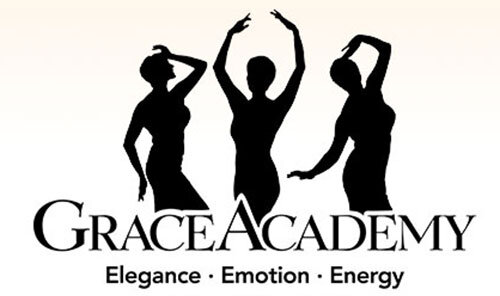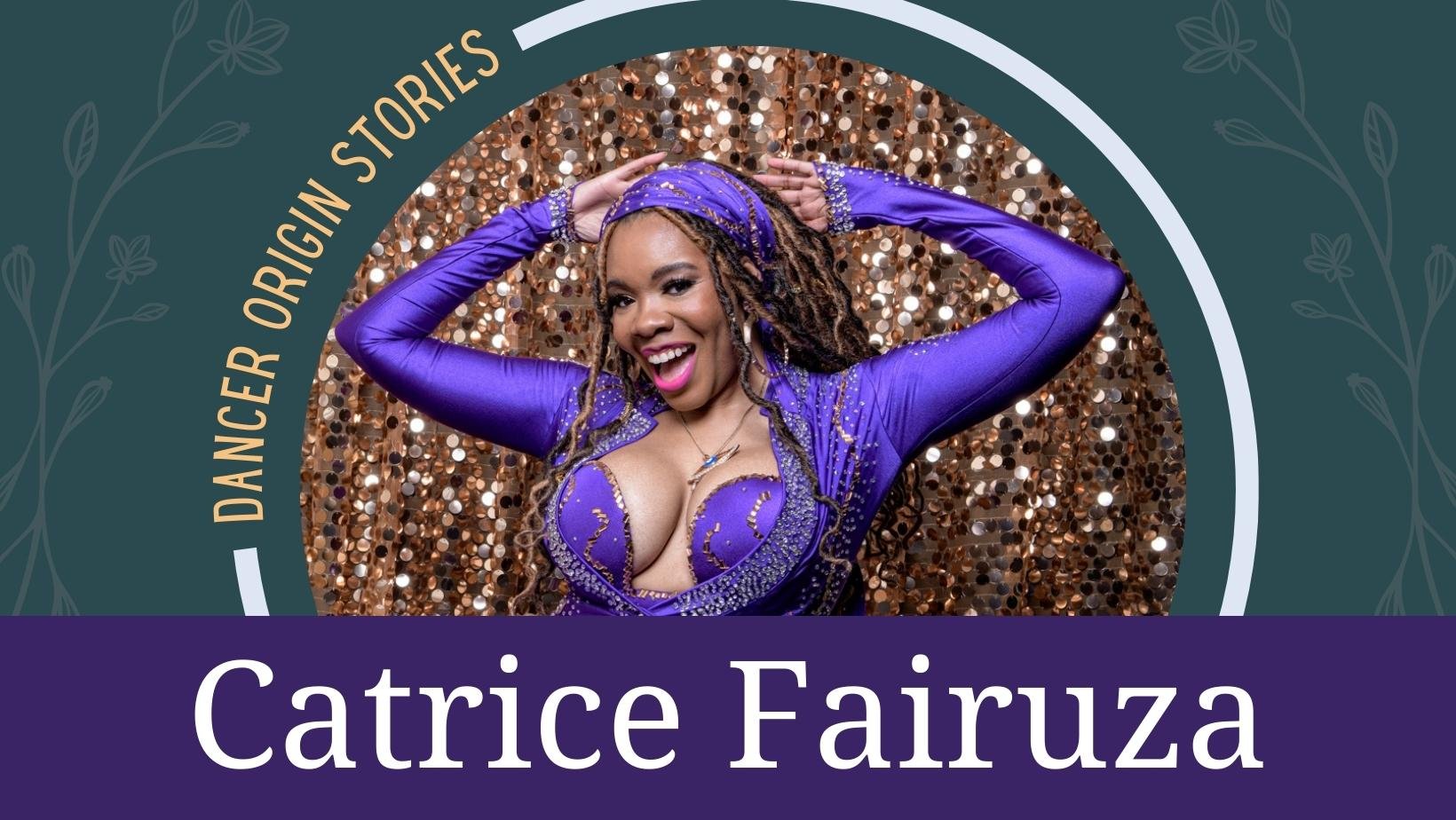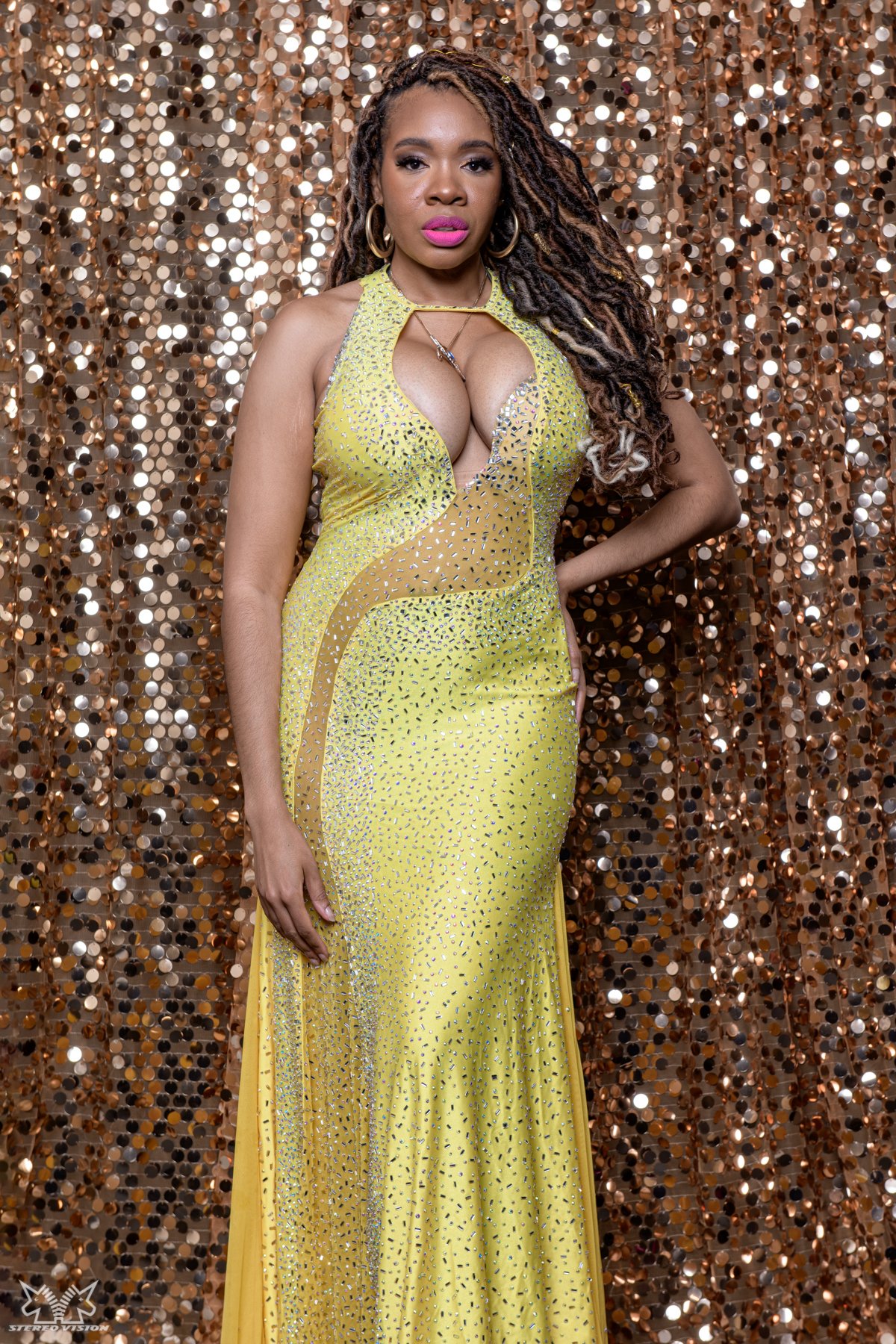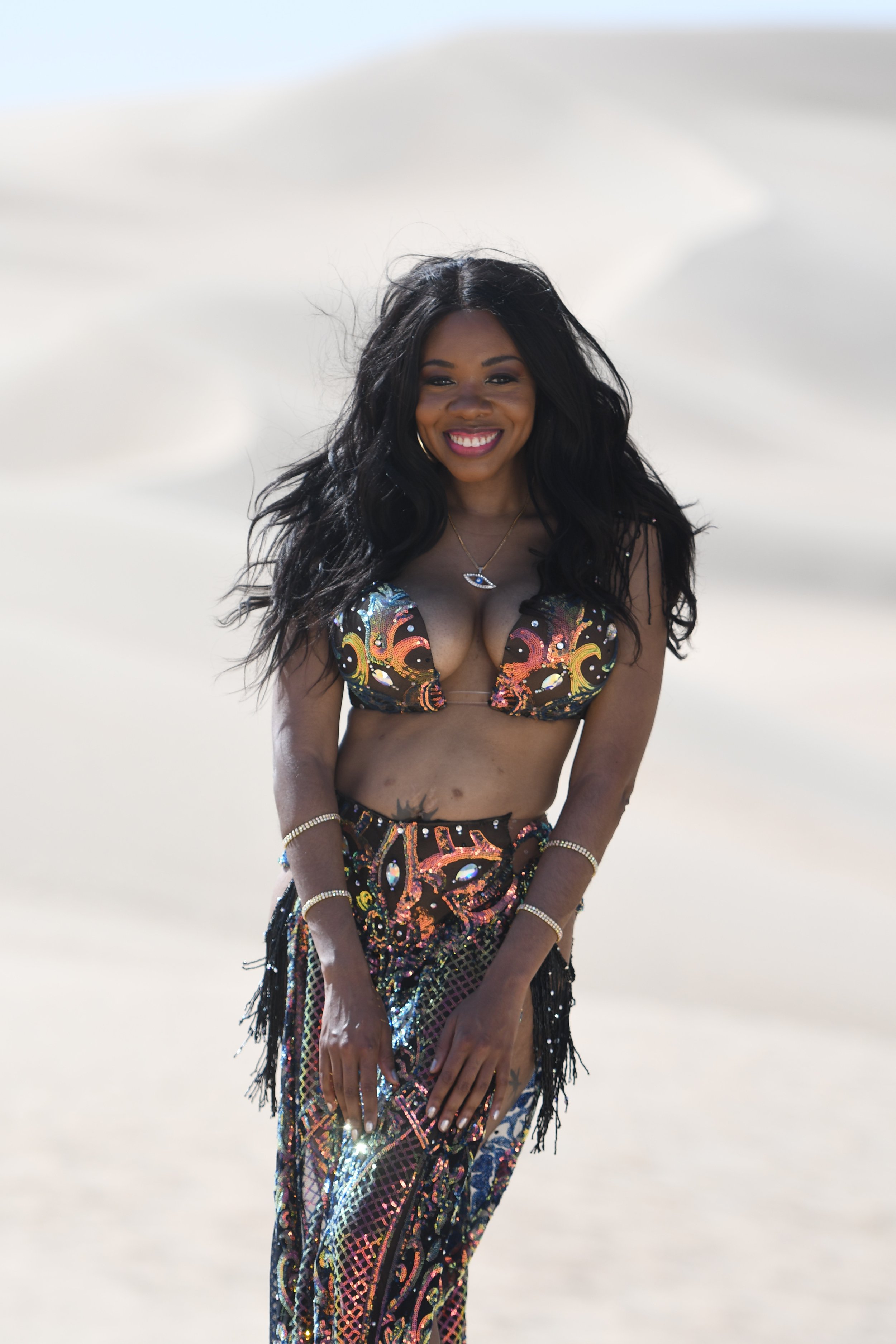Dancer Origin Stories – Catrice Fairuza
Catrice Fairuza Wallace is a multi-award winning international dancer, choreographer and teacher located in Upstate New York. Catrice specializes in the North African Dance known as Egyptian Raqs Sharqi. She has been able to travel the world learning dance from dancers of origin. As well as being a student of all different types of dance, Catrice Fairuza truly enjoys immersing herself in Egypt's many different diverse and beautiful cultures while being respectful of the country’s beliefs, and history.
Let’s learn about Catrice’s origin story.
Q. What is your first memory of dance?
I absolutely can remember my Papa teaching me to do the two step in his living room. I was probably five. I was in elementary school, I think kindergarten. We were learning the square dance. I was showing him the square dance and he kind of looked at me and was like, if you’re gonna learn the real dance, you’re gonna learn a real dance. And he taught me how to two step.
That weekend, he invited all of my uncles over and our cousins and we had a backyard party and I was the star dancer. It was the first time I felt connection with myself in earth. I think I danced for an hour and a half.
Q. How did you first encounter belly dance?
Honestly, the first time I ever heard the music, I think I was in a YouTube rabbit hole. I heard this beautiful song. And when I heard it, I can remember shutting my eyes and my headphones and pressing my headphones closer to my head. The words were written in Arabic, so I didn't understand anything. I took a screenshot of it, sent it to my friend, who's Muslim, and I said, please help me figure out what the song is. They told me what the song was and I typed it into Google and I saw dancers dancing to the song.
I was like, what is this? I'm clicking and clicking and clicking. And then I saw Ahava of San Francisco do this song. I saw her dance and I cried. I was like, what is this dance? I must know more. So I went on this very Virgo research journey and I found out what it was. I saw all those other dancers and they were great and they were wonderful and they were beautiful, but there was something about Ahava.
It made it come home for me, if that makes sense. It made it not only reachable, but seeable. Like I can see it. After that moment, I have been a forever an Ahava fan. I even met her NYC Cairo. I was sitting in the audience, and she was watching the show. She sees me and I start crying and I'm like, I'm a fan! Please don't be scared, please. We took one selfie together and I was smiling from ear to ear and it's still in my dance room. I'm gonna be completely honest, seeing it and seeing all the white dancers, I didn't think this was something I could do.
Q. What phase of life were you in when you took your very first dance class?
I'm gonna be completely honest. I was probably not in like the best stage of my life. I had just found out I had severe SLE lupus, fibromyalgia, and we were waiting for the confirmation of lesions on my brain, which turned out to be MS.
So I was in a very weird kind of “am I even here” state but being in classes made me check in. With all the medications, you're just kind of like trying to survive every day. Dancing brought me to the place where I could connect in my body. Even if it was painful, it was a connection and a connection is a connection.
No matter what it is, you just have to transmute from pain to: I want to do this and I'll continue to do this. So it wasn't the best, and I was having to learn to dance with limited mobility because my hips were locking.
Q. What led to you becoming serious about your dance studies?
What drove me deeper is becoming more aware of what this art form really is. This is a cultural experience. This is another culture’s everyday life. I was dancing at a local hookah bar and that particular day, there were many African people there, such as from Morocco, Egypt, and Algeria. The women came up to me and said, “We are crying because you gave us a taste of our home,” and I sat with that. I wanted to know their home more. I had to be better.
Q. How do other dance forms you have studied inform your primary style?
I have to say that learning and doing my original indigenous dances have taught me to always follow through, whatever I'm doing. I don't care if your arm is going left and your whole body's going left.
It taught me not just connection to the music, but connection to the earth beneath you, even if you're on a stage, right? Because it's a little bit race, but it's still connected to the earth, and if it's connected to the earth, it's also connected to your audience.
Q. Tell me about one of your most influential teachers.
It's so hard to pick one. I'm gonna have to go with Nefertiti of Delaware. If you ask why she is influential it's because, at one point in her life where she was going through a crazy divorce and everything, she decided to pack up and move to Egypt. She followed her dreams. She got out of the country, went to Egypt, was dancing in venues, on boats.
My own brain is scatterbrained right now, but I was able to watch her juggle getting her doctorate, doing dance, teaching dance, and still being a pillar in the community. She's influential to me because she made it.
Q. Share the memory of learning a movement that came easily to you…
The movement that probably came the easiest to me was an undulation. But when I say easiest, it's not easy peasy, lemon squeezy.
It came easily to me because I was checking in with my heart a lot. I was doing a lot of heart led yoga. I was healing my inner child at that point. And by leading with my heart, I had to follow through. While I say it was easy, it was only easy because I was working through those things, which is still why it's my favorite movement to kind of do here and there, because even in dance, I am checking in with my myself.
Q. And a movement that you had to work hard to master?
Choreography has always, always been a challenge for me and people were just like, oh, you're just not good at choreography. No, I am good at choreography. Here's the thing, I have to chew gum while I learn choreography. It’s kind of a white noise filter, like, my body recognizes that if I am chewing gum, it must be easy.
Q. What dance skills translate to your everyday life?
I was in the air force. I worked with a lot of men and if you know anything about the military and you are a woman, then you know, it does not pay to be womanly in the military, if you understand my meaning. In doing that for so long, I kind of forgot what it was like to be a woman.
I’m not say like we are lipstick and perfume. No…. what it is to let your hips naturally sway. When you are in dance, you let your hips sway. You let your arm sway. You let your hair sway. You let your chest sway. You let all those naturally pronounced curves or not pronounced curves on your body. You are not trying to conform to the 63 other people in your company. You are an individual.
Dance taught me to check in with my individuality. It let me check in with my masculine and feminine sides and in checking in with those, it let me check in with my confidence.
Q. What everyday skills translate to your dance life?
It's the opposite of that! While dancing allowed me in my every day to be an individual, when I walk into my office and I no longer have to be the borg. I can be the individual. On the other hand, going from this life to dance life, I can assimilate into the borg. I can assimilate into a troupe. I can assimilate into knowing that I'm working with other women. And I want to see them succeed.
Q. What do you currently have in progress?
Always Mischief Maker couture designs. We are always creating, whether it's costumes or swimsuits.
And because I am a huge nerd and I am letting my nerd flag fly, we are now doing cosplay commissioners. I'm personally getting ready for seven Comic Cons coming up in the summer that I'm gonna be going to and playing at, and I will even be on one or two panels. I will be at Blerd Con in DC, in July. I am super excited about that.
I have four Cosplays planned. Of course I’m gonna be showing up as LeeLu from The Fifth Element, my favorite movie. There will be a couple of other cosplays coming out that are gonna be new to the scene—that actually required me learning how to make special effects makeup.
Bellydance was the original reason why I learned to sew. I was tired of costumes not being in my size and getting charged $400 more to have it made specific to me.
I do teach online, but it's mostly privates. I'm thinking to putting together just a couple of little classes just to bring together the community and support each other.
Q. What else would you like to add, if anything?
Thank you for inviting me. Thank you for entrusting me. Thank you for loving me. Thank you for supporting me. Anyone that's listening to this, just thank you. Know that whatever you're doing, you're seen and you're loved and you're protected.
And whether we know each other in real life or on Facebook, or just in passing, there isn't a moment that I'm not grateful for the people in my life that show me the simplest of kindnesses, when I wake up in the morning and people blow me kisses on Instagram. I miss you. And I love you.
This is just an excerpt from our hour-long interview in May 2022. Scroll down or click here to watch the full interview with Catrice Fairuza!
About Catrice
Catrice has been teaching since 2018, and specializes in the North African Dance known as Egyptian Raqs Sharqi. Classes are open to anyone regardless of color, size, sexual orientation, age, fitness ability, or dance experience. Raqs Sharqi is an amazing way to connect with your body while also learning about new cultures and music.
Alongside Natasha Tripi, Mischief Maker Couture Costumes was started because Catrice and Natasha saw the lack of diversity in the costuming world. The sheer lack of representation for all shapes, sizes and skin tones that were not catered to, or if they were occasionally featured, those differences caused a significant upcharge.
Check out her website for more information on her classes and Mischeif Maker Couture Costumes for dance! https://www.catricefairuza.com/










